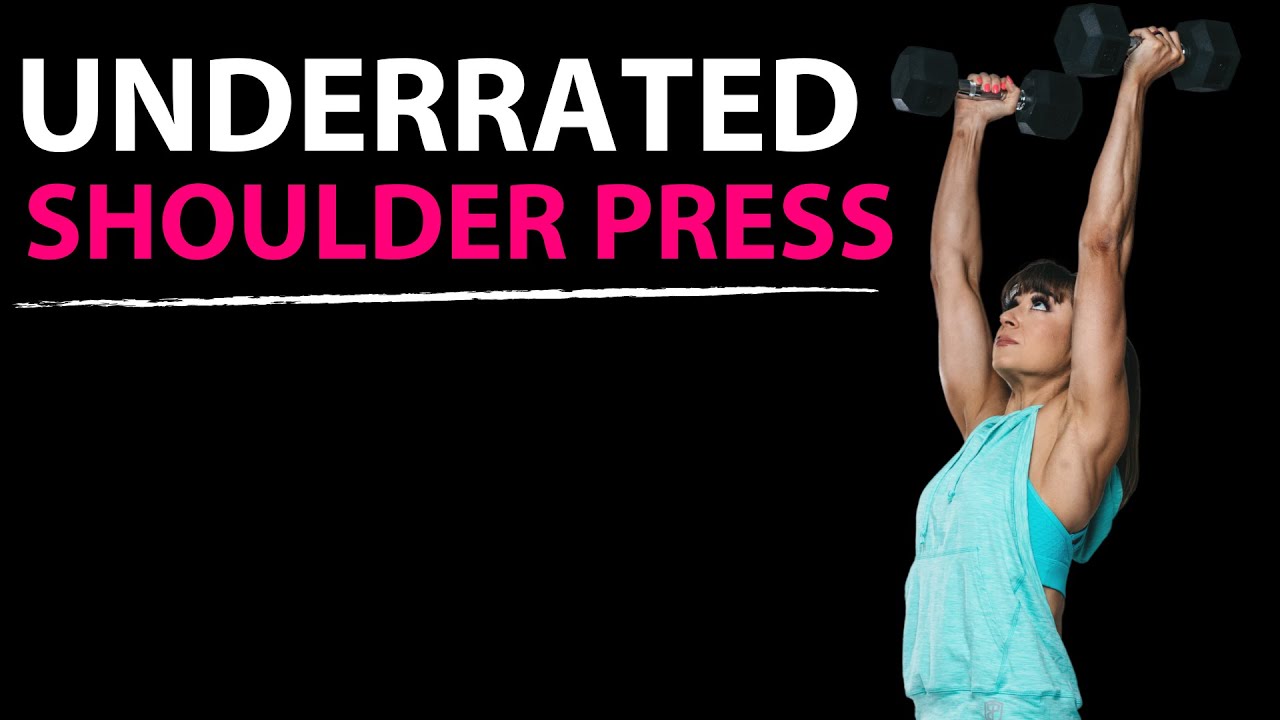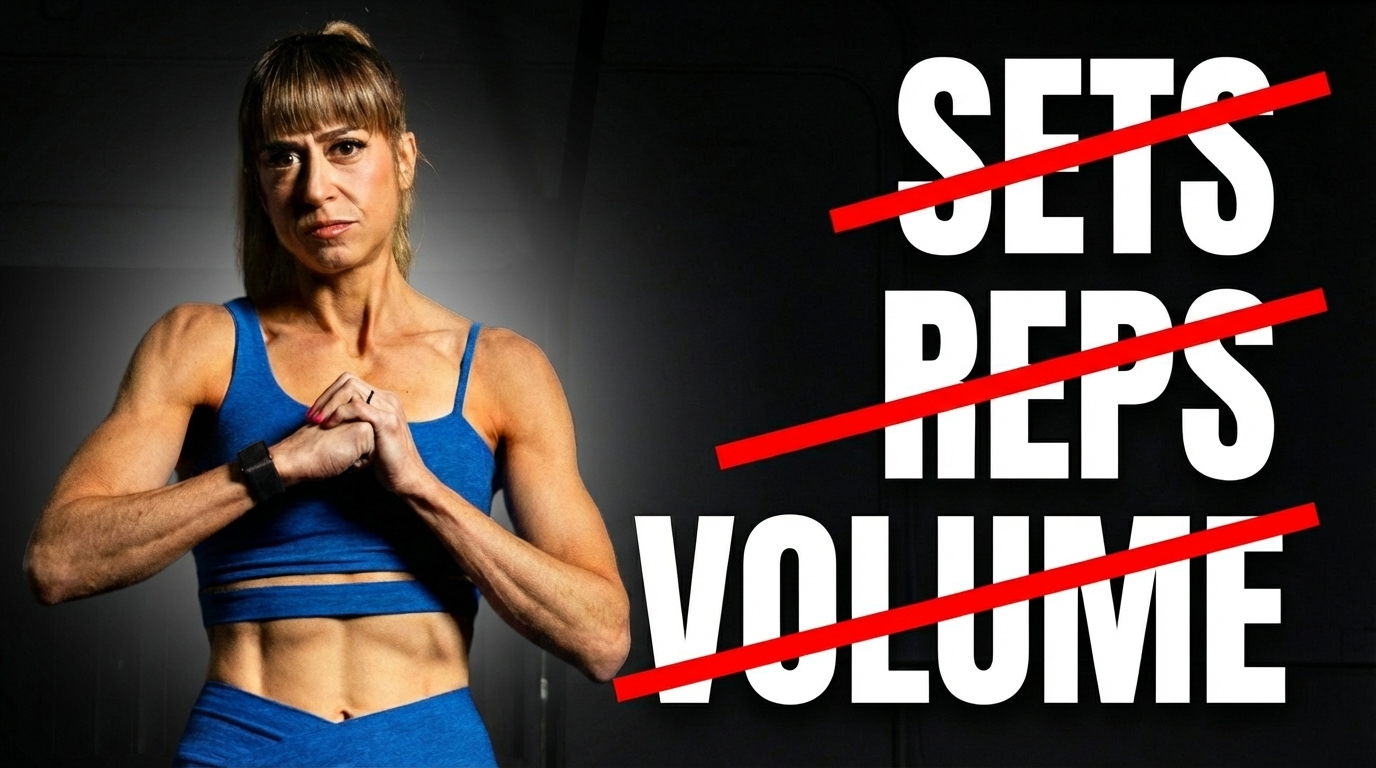The overhead press is a tough compound shoulder, tricep and chest exercise. It is also a great move to work your core, serratus anterior and even upper traps.
And while vertical pressing movements are key to include, they require more mobility and stability than we often realize.
They require not just shoulder mobility and stability, but also scapular and spinal mobility and stability as well.
The problem is, all too often our mobility and stability in these areas is lacking, and partly because of our common daily postures.
We spend far too much time hunched over our technology or commuting to and from work.
And this constant forward flexion, can lead to shoulder, scapular and thoracic mobility restrictions that may cause us to suffer from neck, shoulder and upper back aches and pains when we try to go heavy with overhead pressing.
These mobility restrictions can even be why your lower back is sore and achy after performing this upper body move!
So while it’s key we work to address these mobility and stability issues with our prehab work and including foam rolling, stretching and activation as part of our warm up, it may also mean that the basic overhead press is not the best option for us to start.
Because of these common mobility restrictions and the fact that so many of us compensate to try to replicate proper from, I actually love to sub in this often underrated overhead press variation, the landmine press.
It can help us get the full benefits of the overhead press with less strain on our rotator cuff as well as less risk of us arching and overloading our lower backs to compensate.
If you are currently working to improve your thoracic extension and shoulder mobility as well as your scapular control, you may find the Landmine Press allows you to include overhead pressing without feeling like you’re going to get injured.
Because of the slightly angled press, this move can more easily allow you to engage your back to support your shoulder and feel that scapular movement. It also requires less thoracic extension to perform correctly.
And my favorite variation of it, the single arm press, can even help you correct imbalances as you strengthen your shoulders, triceps and chest!
Before I dive into 3 tips to get the most out of this amazing move, I wanted to go over basic Single Arm Landmine Pressing Form.
How To Do The Single Arm Landmine Press:
To do the Single Arm Landmine Press, set a bar up in a landmine and grab the bar in one hand with a neutral grip, bringing the bar up to your shoulder. Stand with your feet about hip-width to shoulder-width apart and parallel. The bar should be just a few inches in front of your shoulder so you can hold it comfortably with your chest pressed out.
Think wide shoulders as you brace your abs as if about to be punched in the gut. Squeeze your glutes as well to help better engage your lats to support your shoulders.
Then press the bar out, extending your arm fully. Do not really lean into the press or round or reach out. Just press to fully extend your arm, then lower the bar back down to your shoulder.
Do not rotate or lean as you press. Keep your core engaged. Repeat all reps on one side before switching.
Now what are 3 tips to help you adjust this move to fit your needs and goals and get even more out of the basic variation?
#1: Vary Your Stance.
While this is an upper body move, how you stand to press can impact the additional benefits you get from the move.
In the basic form I mentioned, you will get a great anti-rotational core benefit. And the narrower your foot stance, the more you’ll have to fight your body’s desire to rotate.
You can also stagger your stance for a bit stronger base of support and to potentially even be able to focus on heavier loads.
But standing isn’t your only option for this move.
You can move to half kneeling, full kneeling or even seated!
While seated, you won’t be able to handle as heavy a load, it prevents you from compensating or seeking out mobility from other places. This move can be very core intensive and challenging.
Full kneeling will also be another challenging core option, requiring you to really fight the urge to rotate or lean. This variation can be great if you struggle with lower back pain during pressing and need to practice that ab and glute engagement.
Half kneeling is also a great way to really focus on ab and glute activation, but while being able to go slightly heavier than full kneeling. It is a great way to focus on using that glute activation on the knee that is down to better engage your lat on the pressing side to improve your shoulder stability and scapular control.
No one stance is better or worse. And you may find you even progress the move simply by adjusting the stance to adjust the different benefits you get from the move. We have to remember that the same, but different can be a form of progression as we use a move over different workout programming.
#2: Use Your BACK – Focus On Your Shoulder Blade Moving.
Often we ignore the importance of our back to improving our pushing movements. And not only the muscles of our back but the control of our shoulder blades in general.
When you set up to press and think about any of the cues from “press your chest out” to “wide shoulders” what you also want to be thinking about is engaging the sides of your back to support your shoulders and make sure you are unshrugged to start.
If you start the press with your shoulders shrugged and shoulder blades elevated, you are pressing from a weakened position – a position that is going to put more strain on those smaller muscles, like your rotator cuff.
By engaging the sides of your back to start with those shoulders down, you can press from a strong position.
And then don’t just think about pressing the weight out with your shoulder. Think about feeling that shoulder blade move. Your shoulder blade will upwardly rotate and posteriorly tilt as you press.
This movement is key to pressing safely.
So don’t just go through the motions of pressing the weight up.
Think about that back engagement as you set up to press from a point of strength and then focus on feeling your shoulder blade move as your back is involved in that shoulder flexion or press overhead!
#3: Don’t Ignore Your Core.
Whichever stance you use, your core will be engaged. Part of what causes lower back overload during overhead pressing is a lack of thoracic extension so we seek out mobility from our lumbar spine, but also a lack of proper core engagement to protect our lower back.
As you press, you do want to think about not only engaging your abs, but also your glutes. By engaging your glutes, you can actually help yourself better engage your lats to stabilize your shoulders.
And you’ll also help prevent yourself from being able to easily arch your lower back because you’re focused on squeezing your glutes to drive that hip extension.
Also by bracing your abs, think about engaging as if you’re about to be punched in the gut, you’ll further stabilize your spine.
Do not hold your breath though as you brace. You can think about exhaling on exertion even to better activate and engage things as you power that press.
You want to focus on everything involved as you press before you start to increase loads. This will ensure you utilize muscles efficiently and effectively, which can even help you lift heavier more quickly!
SUMMARY:
If you’re working to improve your shoulder, thoracic and scapular mobility and stability but want to include an overhead pressing exercise in your routine, consider using the single arm landmine press.
It’s a great way to get the benefits without the mobility and stability required of the full overhead press. And, because it is a unilateral move, it can even help you address imbalances between both sides.
If you find you don’t have a bar that is the appropriate weight, or even a corner to set up the bar in if you don’t have a landmine, one easy modification is a band incline press as well. The resistance band itself can even create a unique challenge of its own!
Love all of my amazing exercises, workouts and tips? Join my FREE Daily Newsletter below:



0 Comments